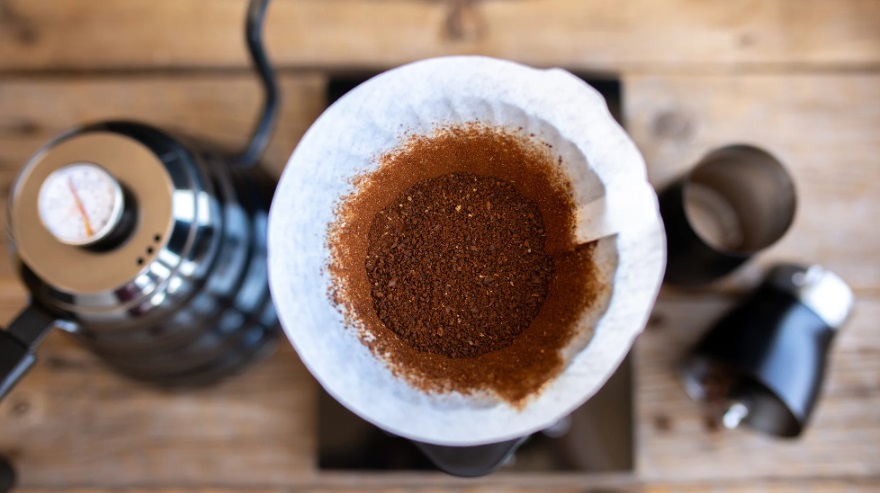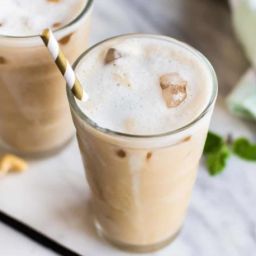
Pour over coffee celebrates the beauty of simplicity and precision in brewing. It’s a method that strips back the complexity of modern coffee machines, inviting you to engage directly with the brewing process. This hands-on approach isn’t just about making coffee; it’s a ritual that many coffee enthusiasts cherish.
The allure lies in its simplicity – all you need is a filter, a funnel, and fresh coffee grounds over which hot water is poured slowly. This method has gained popularity not only for its straightforwardness but also because it allows for the nuanced flavors of coffee to shine through, offering a personalized cup that’s as rewarding to make as it is to drink.
Key Takeaways
- Ideal Grind Size: Medium-coarse to medium-fine is best for pour over, allowing optimal water flow and flavor extraction.
- Impact of Grind Size: The grind size directly influences the extraction process; too fine and you risk over-extraction, too coarse and you might under-extract.
- Achieving the Best Grind: Consistency is key. Use a quality grinder to ensure even grind size for a balanced cup.
The Importance of the Right Grind for Pour Over Coffee
Choosing the right grind size for pour over coffee is more than a mere step in the brewing process; it’s a crucial factor that can make or break your cup of coffee. The grind size affects how water flows through the coffee grounds, extracting flavors, oils, and compounds that define your coffee’s taste. A balance is essential here; a grind that’s too coarse will see water passing through too quickly, leading to under-extracted, weak coffee lacking in depth. Conversely, a too-fine grind slows down the water excessively, resulting in over-extraction and a bitter, unpleasant taste.
Grind Sizes for Pour Over Coffee
Navigating the world of coffee grinds can feel like decoding a complex language. But when it comes to pour over coffee, understanding this language is essential for crafting the perfect cup. Let’s dive into the spectrum of grind sizes from coarse to extra fine, and why medium-coarse to medium-fine grinds are your best bet for pour over perfection.
Coarse Grind: Imagine the texture of sea salt. This grind is too chunky for pour over, as it leads to under-extraction. Water flows through too quickly, missing out on a lot of the coffee’s flavor.
Medium-Coarse Grind: Think of rough, sandy beaches. It’s not as chunky as the coarse grind but still has some heft. This size allows for a slower water flow, giving it more time to extract flavors without overdoing it. It’s starting to hit the sweet spot for pour over brewing, providing a balanced extraction.
Medium Grind: Regular beach sand is what comes to mind here. It’s a popular choice for drip coffee makers but can work for pour over if you prefer a slightly faster brew with good flavor extraction. However, it may risk a quicker extraction that could miss out on some nuances.
Medium-Fine Grind: Slightly finer than table salt, this grind size is where many find their pour over coffee to excel. It balances extraction time and flavor, allowing the water to interact with the coffee grounds just long enough to extract a wide range of flavors without becoming bitter.
Fine Grind: Resembling table salt, this grind is typically used for espresso. It’s too fine for pour over, leading to over-extraction and a bitter cup, as water struggles to pass through the densely packed grounds.
Extra Fine: Think powdered sugar. It’s way too fine for pour over, designed instead for Turkish coffee where the grounds are fully immersed.
For the ideal pour over cup, aiming for a medium-coarse to medium-fine grind offers the best balance. It ensures the water has enough resistance to extract the coffee’s full flavor spectrum, from bright and fruity notes to deeper, chocolaty undertones, without bitterness or sourness.
Factors Influencing the Choice of Grind Size
When preparing pour over coffee, the grind size isn’t just a minor detail—it’s a critical element that can dramatically affect the quality of your brew. Let’s explore how brew time, water flow, flavor profile, brewing method, consistency, and bean freshness all play pivotal roles in deciding the ideal grind size for your coffee.
Brew Time and Water Flow: The grind size directly influences how water flows through the coffee grounds. A finer grind means slower water flow, allowing for more thorough extraction of flavors. Conversely, a coarser grind results in quicker water passage, potentially leading to under-extraction. The goal is to find a grind size that allows water to extract flavors efficiently within your brew time, striking a balance that avoids both over and under-extraction.
Flavor Profile: The size of your coffee grinds can significantly impact the taste of your brew. Finer grinds tend to extract more flavor quickly, resulting in a richer and sometimes more bitter cup if over-extracted. On the other hand, coarser grinds may yield a lighter, more subtle flavor profile, perfect for those who enjoy a milder cup. The grind size can be adjusted to enhance certain flavor notes, making experimentation an exciting part of the coffee brewing process.
Brewing Method: The pour over method you choose also dictates the grind size. For instance, the V60 typically requires a medium-fine grind, balancing extraction time and flavor richness. The Chemex, with its thicker filter, pairs well with a medium-coarse grind, facilitating a clean and clear flavor profile. The Kalita Wave’s flat bottom design is more forgiving and versatile, working well with a range from medium to medium-coarse grinds. Each brewing apparatus has its unique requirements and characteristics, influencing the grind size choice.
Consistency and Bean Freshness: Achieving a consistent grind size is crucial for uniform extraction and flavor. Irregular grind sizes can lead to a mix of over and under-extracted grounds, resulting in a cup that’s both bitter and sour. Additionally, the freshness of your beans can affect their behavior when ground. Fresh beans, full of gases and oils, may require slight adjustments to grind size to ensure optimal flavor extraction. As beans age, their characteristics change, and so might your preferred grind size.
Step-by-Step Guide to Grinding Coffee for Pour Over
Achieving the ideal consistency for pour over coffee begins with your grinder. Follow these steps to ensure your coffee grounds contribute to a perfect brew:
- Choose the Right Grinder: Opt for a burr grinder over a blade grinder to achieve a consistent grind size.
- Measure Your Beans: Start with a specific ratio of coffee to water. A good starting point is 1:16 (one part coffee to sixteen parts water).
- Select Your Grind Size: Aim for a medium-coarse to medium-fine grind. Think of the texture of beach sand as a reference.
- Grind Your Beans: Pulse your grinder to prevent overheating the beans, which can affect their flavor.
- Check the Consistency: Ensure the grind size is uniform. Irregular sizes can lead to uneven extraction.
- Adjust as Necessary: Based on the taste of your brew, fine-tune your grind size. A slightly finer grind can enhance under-extracted, weak coffee, while a coarser grind can mitigate bitterness.
FAQs
What do I do if my coffee tastes too bitter or too weak? A: If your coffee is bitter, your grind might be too fine, leading to over-extraction. A coarser grind can help. If it’s too weak, you may need a finer grind for better extraction.
How does the freshness of my coffee beans impact grind size? A: Fresh beans often require a slightly finer grind than older beans due to their higher moisture and gas content. As beans age, a coarser grind may be needed to achieve the same flavor profile.
Can the grind size affect the brewing time? A: Absolutely. A finer grind will slow down water flow, increasing brewing time, while a coarser grind will do the opposite.
How often should I adjust my grind size? A: Adjust your grind size based on taste and the specific coffee bean you’re using. Different beans and roasts may extract flavors differently, necessitating slight adjustments.
Final Thoughts
Finding the right grind size is a cornerstone of brewing excellent pour over coffee. It’s a delicate balance that impacts extraction, flavor, and overall enjoyment. Remember, the perfect grind size is subjective and can vary based on the bean, roast, and personal taste preferences. Experimentation is key—adjust based on your results until you find your ideal setting.









